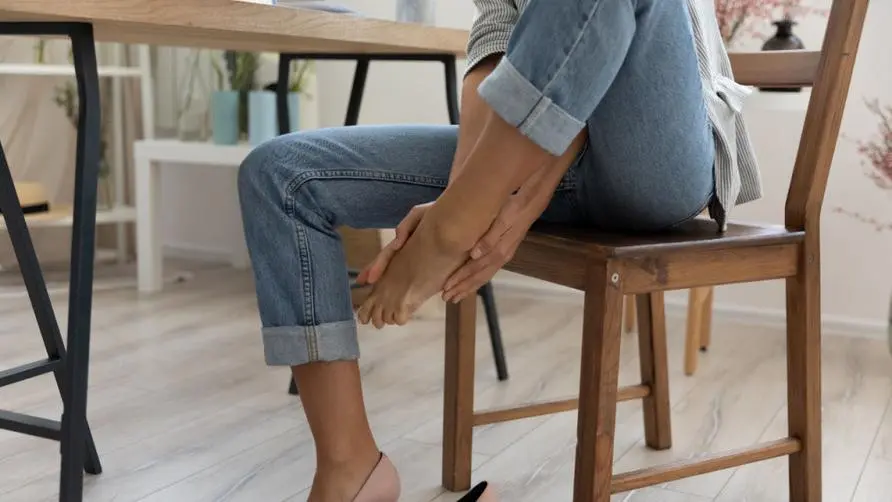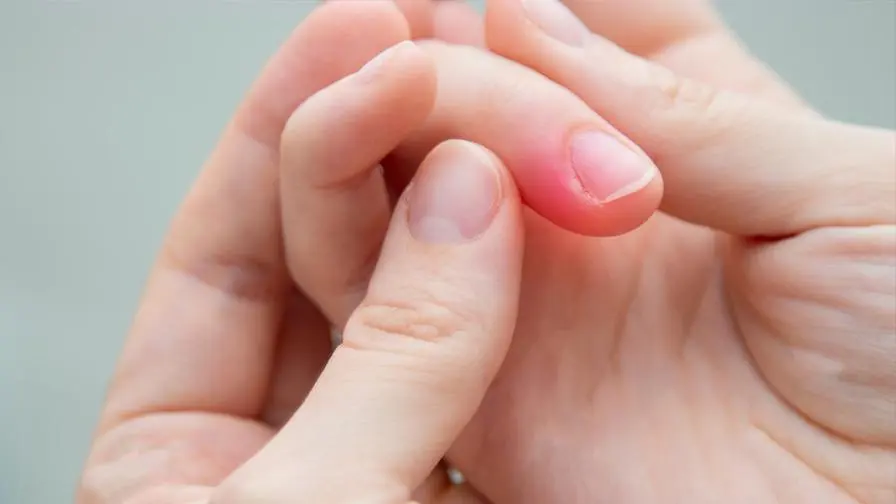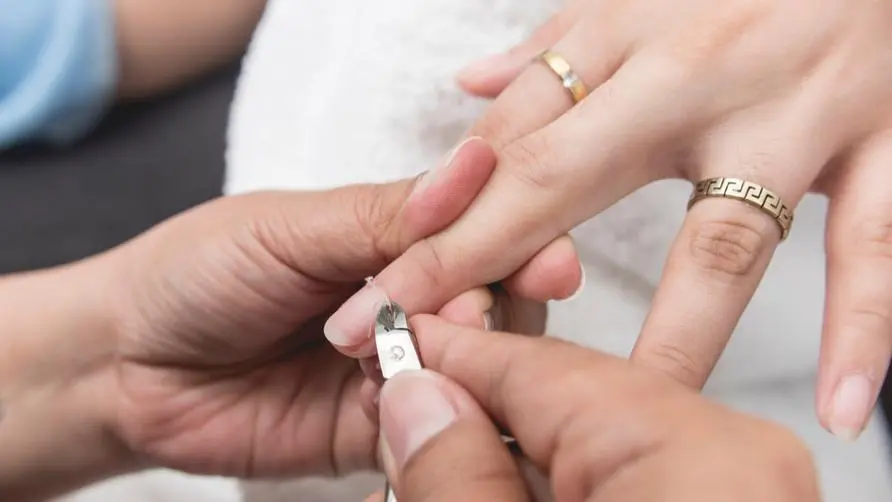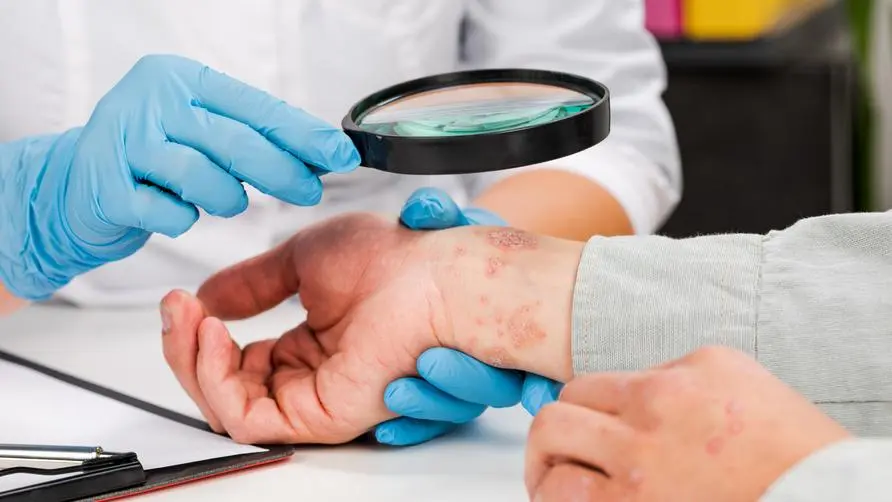Is it a misconception to "curve" your toenails? Doctor: Paronychia may recur and become severe, requiring "nail removal" to heal

Ms. Li, 30, had to wear “covered shoes” to work due to work reasons. Standing for a long time caused long-term pressure on the outer sides of the thumbs of both feet, and gradually developed swelling and pain. At first, I thought it was just a minor problem such as shoes that didn’t fit my feet. Unexpectedly, after a diagnosis by a doctor at the outpatient clinic, it was discovered that the toes were severely “frozen nails” and had caused “paronychia”. Medication was needed to improve the symptoms.
What are the common causes of frozen nails? Can ill-fitting shoes cause paronychia?
Dr. Wang Zhitang, director of general surgery at Losheng Sanatorium, said that frozen nails are also called “ingrown toenails”, which means that the nail grooves on both sides of the nail are deformed, improperly trimmed, or impacted by external forces, resulting in improper friction between the nail and the skin next to the nail groove. , or even penetrate into the skin, causing inflammation of the nail fold due to infection, causing redness, swelling, and pain. What’s more, “granulomas” may develop. The affected area is prone to exudate, is painful when touched, and may bleed.
Dr. Wang Zhitang explained that there are many causes of frozen nails, a few of which are related to family inheritance, such as “hereditary curled nails”; there are also a few people who are born with excessively wide nail surfaces or abnormal development of toenails. As for the common acquired factors, they are mostly related to wearing inappropriate or too tight shoes, especially for adolescent patients in outpatient clinics. Because their feet grow faster and their shoes are not changed to larger sizes, they lead to nail groove inflammation.
In addition, improper nail trimming or trimming of both sides of the nail too short; diseases such as onychomycosis, psoriasis, or poor blood circulation in the terminal toes leading to nail deformation; trauma or improper external force such as exercise, causing improper squeezing of the thumb, are also symptoms of frostbite. Common causes of A.
Will paronychia recur? Does it seriously need to be “pulled out” to get better?
Dr. Wang Zhitang said that for the treatment of paronychia caused by frozen nails, different treatment strategies can be adopted according to the cause and severity. If the patient complains of only mild pain and no obvious inflammation or infection, “conservative treatment” can be used, such as using tape or cotton ball pads to change the direction of the soft tissue between the fingers, properly trimming the nails and the toe skin next to the nail groove, so as to Reduce the condition of ingrown toenails; patients can also use bath salts to soak their feet for maintenance.
However, once the nail groove becomes infected or inflamed, or even granulomas develop, silver nitrate can be used to chemically cauterize the granulation tissue to gradually shrink it. At the same time, the nails that penetrate the nail groove skin can be trimmed. Antibiotic ointment and oral antibiotics can be used for the nail groove wound. Or treat with anti-inflammatory drugs to improve inflammation. In addition, cotton balls are used to fill the nail groove at the same time to expand the gap between the nail groove and facilitate the penetration of the drug into the wound tissue. After the patient returns home, the nail wound should also be kept dry to avoid recurrence of frozen nails.
For patients with recurring paronychia, active treatment is recommended, that is, removing part of the nails next to the paronychia and destroying the “growth point matrix” of the removed nails, so that the removed nails cannot grow. Further reducing the area of the nail plate will help reduce the pressure of the nails on the nail groove and avoid the recurrence of paronychia.
How to prevent paronychia from occurring? Doctors advise not to trim your nails into “this shape”
Dr. Wang Zhitang said that no matter whether you receive any of the above treatments, correct nail care is the key factor to avoid recurrence. In addition to avoiding ill-fitting shoes, patients should also be careful not to cut their nails too short. The front end should be cut flat rather than into an angle or arc. It is best to keep the white part of the front end of the nail at least 1 mm.
In addition, women who often wear high heels, or men who often wear leather shoe lasts that are too narrow, are more likely to press on their nails and cause damage. Therefore, you should usually choose shoes that fit your feet, preferably ones that allow your toes to expand slightly after wearing them. If you have sports requirements and need to wear tighter shoes, you need to change to a looser style after exercise to allow your toes to rest.
Finally, Dr. Wang Zhitang reminded the public that in addition to affecting the quality of life, repeated nail freezing also affects the appearance of the feet due to the proliferation of granulation. If your nails appear abnormal or infected, you should avoid trimming them yourself. In addition to possible damage to the nail bed, the infection may also be aggravated by using tools that are not properly disinfected. At this time, you should seek professional physician evaluation and treatment to completely get rid of frozen nails.
Further reading:
Are black streaks on nails a sign of cancer? How to distinguish onychomycosis from psoriasis nails?





